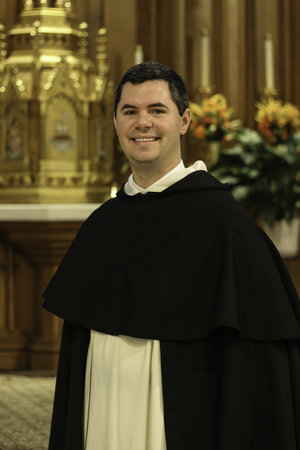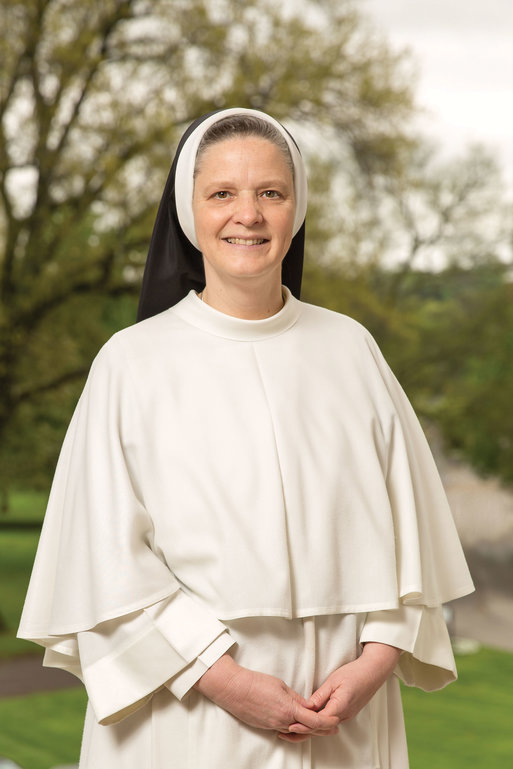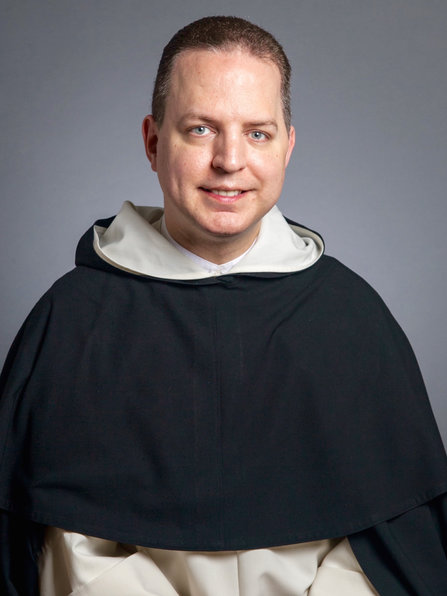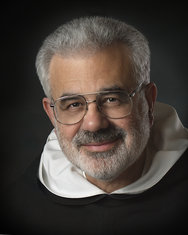Dominicans at 800 Years Old: Order Committed to Preaching Piety
U.S. members of the Order of Preachers discuss jubilee, which included the largest ordination class in 45 years; the new priests were ordained this past weekend.

Father Patrick Briscoe is often mistaken for anything but what he is — a Dominican priest — even though his white, ankle-length tunic, the habit of the Order of Preachers, should be a dead giveaway.
Newly ordained to the Catholic priesthood, Father Briscoe is among about 100 Dominicans who live and work in the Washington area as part of the Province of St. Joseph.
“It’s not entirely uncommon to see us,” Father Briscoe said, but he added with a chuckle, “We’re often believed to be Jedi or Buddhists. People ask if we’re from the East or are Hare Krishnas.”

You’d think an order celebrating its 800-year founding in 2016 would garner more respect — if not recognition. Rest assured, though: Dominicans in the United States are alive and well.
And, in some places, even thriving.
The order is seeing increased vocations, has a vibrant college campus ministry across the country, and even has a celebrity of sorts at Catholic Answers.
“Dominican colleges and high schools are doing very well,” said Dominican Sister Mary Sarah Galbraith, president of Aquinas College in Nashville, Tenn. “Their enrollments are up, and their populations are growing.”
It’s a good time to celebrate 800 years, something Dominicans around the world began doing with the official kickoff last November of their jubilee, which runs through Jan. 21, 2017.
“It’s because of the genius of the flexibility of its founding that it can continue to generate a creative response, no matter what society is, what the ills of society are, no matter what the challenges are,” Sister Mary Sarah said.

Dominicans Abroad and at Home
The challenge that prompted St. Dominic in 1216 to found the Order of Preachers — aka, Dominican Friars, Blackfriars or simply “the Friars” — was Albigensianism, a movement that preached, among other things, that matter was evil and that there were two gods.
He formed his order on the Dominican pillars of prayer, study, community and preaching. From it have sprung 200 blesseds and 70 saints, including Sts. Thomas Aquinas, Catherine of Siena and Martin de Porres. The order also gave us the Rosary, which Tradition says St. Dominic received directly from the Virgin Mary.
Today, Dominicans are led by Brother Bruno Cadoré, master of the order, who was installed in 2010 as the 86th successor of St. Dominic. He directs an order present in more than 100 countries and serving in universities, parishes, international missions, military chaplaincies and elsewhere.
They have been in the United States since 1526, notes the website Dominican Life | USA (DomLife.org), sponsored by the Dominican Sisters Conference. The order landed with Spanish colonists near the current site of Georgetown, S.C. Other friars followed, but it wasn’t until 1805 that the order had a permanent presence in the U.S., when Dominican Father Edward Dominic Fenwick established the Province of St. Joseph at St. Rose, Ky.
In 1818, Father Fenwick and his Dominican nephew, Nicholas Young, built the first Catholic church in the state — a log cabin in Somerset. Three years later, Father Fenwick was named the first bishop of Cincinnati, which was then comprised of present-day Ohio, Michigan and Wisconsin.
Dominican women have been established in the United States since the 1822 founding in Kentucky of the Congregation of St. Catherine of Siena (now Dominican Sisters of Peace).
Dominicans in the United States today are organized into four provinces: St. Joseph (Eastern), St. Albert the Great (Central), St. Martin de Porres (Southern) and the Most Holy Name of Jesus (Western). Each is composed of communities and apostolates.
Their influence is far and wide, if not, perhaps, as well known as Jesuits or Franciscans.
“Dominicans in life, like St. Dominic, sometimes can be more hidden than other orders,” Sister Mary Sarah said.
That draws agreement from Father Briscoe. “There’s a certain hiddenness to us, but it is because of our willingness to do what the Church needs wherever she needs it,” Father Briscoe said.
Growing Numbers
Dominican Father Thomas Petri’s service comes at the Pontifical Faculty of the Immaculate Conception at the Dominican House of Studies in Washington, where he is vice president and academic dean. The house is within the Province of St. Joseph, which includes apostolates such as Providence College (founded and run by Dominicans), chaplains and professors at various universities, 18 parishes and active campus ministry. It also has one of the fastest-growing communities of men’s religious orders in the United States.
“We have over 70 men in formation, putting our houses at capacity,” Father Petri said.

His own formation began in 2003, as a novice. “I was attracted to the communal life, but also to the intellectual life, the academic apostolate and to the idea that once one is ordained, a brother or a priest could continue to live a theologically rich life,” he said.
The order hasn’t disappointed him.
“I always imagined that living in communal life ... would be very militaristic and very hyper-organized,” Father Petri said. “That’s not the case for Dominicans. We live communal life and value each other as brothers. There’s a lot of room in the Dominican religious tradition and in our view of the moral life for personal dispositions, and we have a lot of quirks. You sort of learn to live with each other’s quirks. There’s something very liberating about Dominican religious life, in which we find ourselves radically accepted by our brothers in spite of our faults and idiosyncrasies, if you will.”
Father Petri’s community house includes about 30 priests and 50 men in various stages of formation. “We are, to my knowledge, the largest Dominican community of friars in the Western Hemisphere.”
And getting bigger.
His class of 2003 had been the largest for the community in a long while, with 11 men who entered the novitiate. They have just about averaged that every year since, and this year, up to 15 novices could begin their studies in August. That has the community looking to expand or move their novitiate house in southwest Washington. “Because we really are starting to hit a ceiling, as far as room goes,” Father Petri said.
The community includes Father Briscoe, ordained a priest May 21, with 10 of his classmates. It’s the largest ordination class for the province in 45 years. After further studies, he’s likely to end up in a big city doing campus ministry — which is fine by him.
“When St. Dominic founded us, he sent us to the great university cities of Europe — and we’ve by and large kept that tradition of living at the heart of great cities,” Father Briscoe said. “There is kind of an urban monasticism forming these thriving Christian communities in the middle of the city. That really compelled me, because it was a paradox: something so striking and out of the ordinary.”
Sister Mary Sarah serves in just such a community as president of Aquinas College. It was founded in 1961 by the Dominican Sisters of St. Cecilia Congregation, itself established in 1860 and now part of the St. Martin de Porres Province.
The 48-year-old Kansas City native joined the Dominicans in 1988 at 20 years old.
“My attraction to the order, specifically to the Congregation of St. Cecilia, can be summed up in one word, which is ‘joy.’ As soon as I met the sisters, I had this experience of feeling like I was at a family reunion of people I had never met before. And it looked like the perfect thing to do with the rest of one’s life — my life.”
The congregation is just shy of 300 members, with about 150 in Nashville, and they’re growing. “Usually around 15 new sisters a year, which is lovely, isn’t it?” Sister Mary Sarah said.
They teach students from preschool to college, in more than 30 schools in 18 dioceses, as well as in Australia. The sisters have a median age of 36; and over the past 10 years, more than 100 sisters have entered the congregation.
Also involved in education — but in a much different way — is Father Vincent Serpa, ordained a Dominican priest in 1968 in the Western Province of the Most Holy Name of Jesus. He spent three years doing radio work in San Francisco while still in school and since has served in Dominican parishes in Los Angeles, San Francisco and Portland, Ore.

From 1992 to 2000, he served as novice master in Oakland, Calif. In September of that year, he joined the staff at Catholic Answers as chaplain and staff apologist. He remains there today, heard daily on his Catholic Answers Minute.
“The work I do at Catholic Answers is very Dominican,” Father Serpa said. “I minister the word. It’s explaining the faith to people, but it’s also supporting people in their faith: helping them to believe and to pray.”
He was attracted to the order’s choral office (he’s still chanting the office every day at Catholic Answers, which has a Dominican Third Order there for laity) and the writings of St. Thomas Aquinas, as well as the emphasis on the Blessed Sacrament (St. Thomas wrote the liturgy for Corpus Christi).
Initially, though, he was attracted by the way Dominicans looked -— the white tunic, scapular and capuce.
“The habit was very appealing to me,” he said.
The same habit worn — and the same work done — for 800 years.
Register correspondent Anthony Flott writes from Papillion, Nebraska.

















